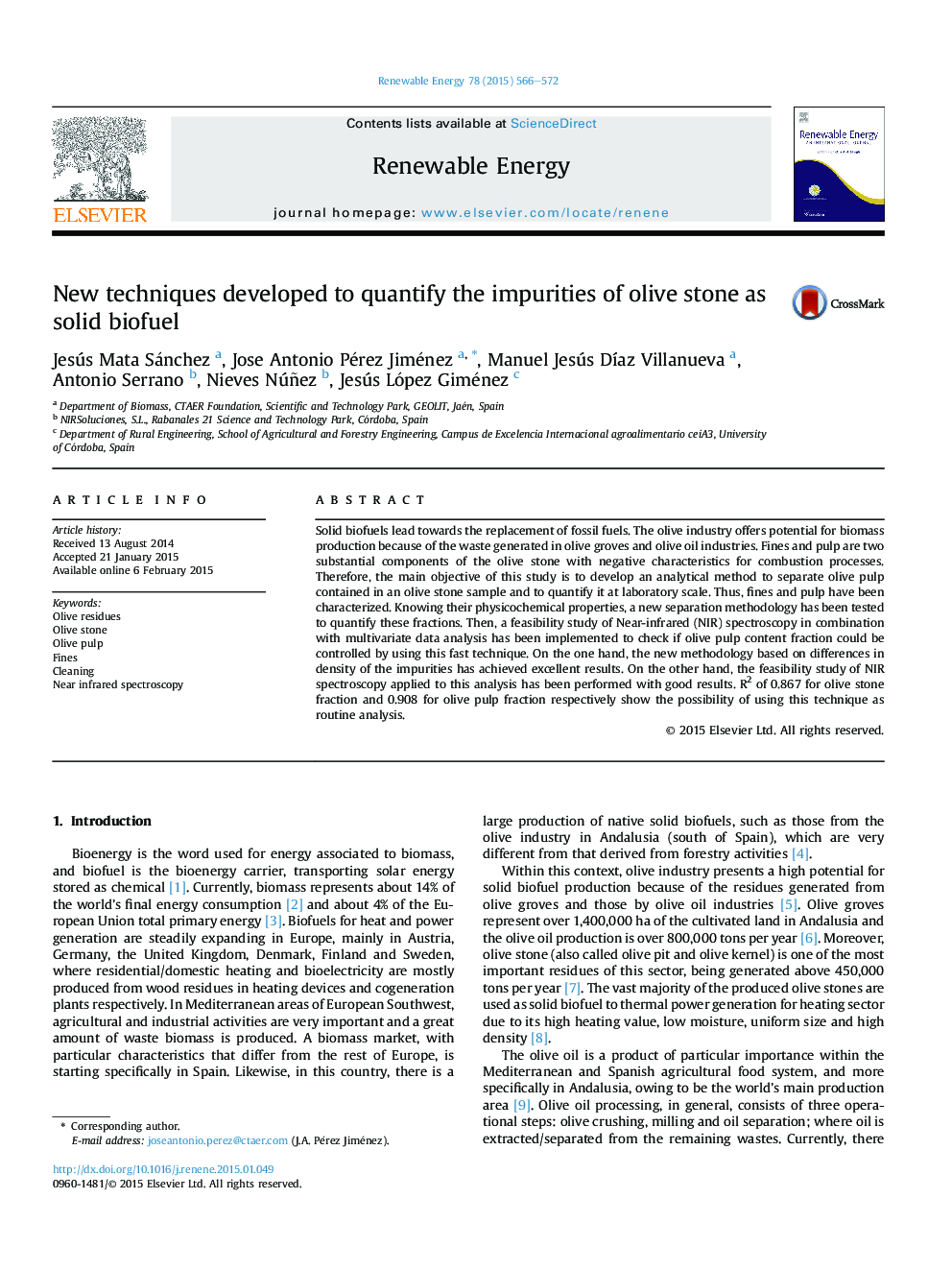| Article ID | Journal | Published Year | Pages | File Type |
|---|---|---|---|---|
| 6767615 | Renewable Energy | 2015 | 7 Pages |
Abstract
Solid biofuels lead towards the replacement of fossil fuels. The olive industry offers potential for biomass production because of the waste generated in olive groves and olive oil industries. Fines and pulp are two substantial components of the olive stone with negative characteristics for combustion processes. Therefore, the main objective of this study is to develop an analytical method to separate olive pulp contained in an olive stone sample and to quantify it at laboratory scale. Thus, fines and pulp have been characterized. Knowing their physicochemical properties, a new separation methodology has been tested to quantify these fractions. Then, a feasibility study of Near-infrared (NIR) spectroscopy in combination with multivariate data analysis has been implemented to check if olive pulp content fraction could be controlled by using this fast technique. On the one hand, the new methodology based on differences in density of the impurities has achieved excellent results. On the other hand, the feasibility study of NIR spectroscopy applied to this analysis has been performed with good results. R2 of 0.867 for olive stone fraction and 0.908 for olive pulp fraction respectively show the possibility of using this technique as routine analysis.
Related Topics
Physical Sciences and Engineering
Energy
Renewable Energy, Sustainability and the Environment
Authors
Jesús Mata Sánchez, Jose Antonio Pérez Jiménez, Manuel Jesús DÃaz Villanueva, Antonio Serrano, Nieves Núñez, Jesús López Giménez,
